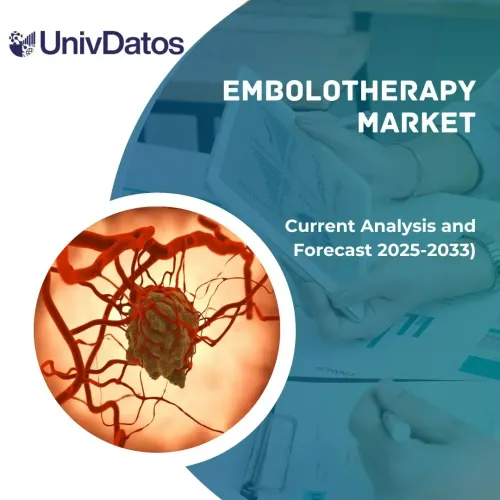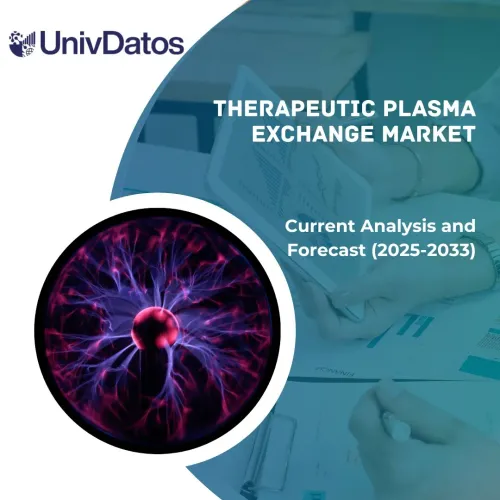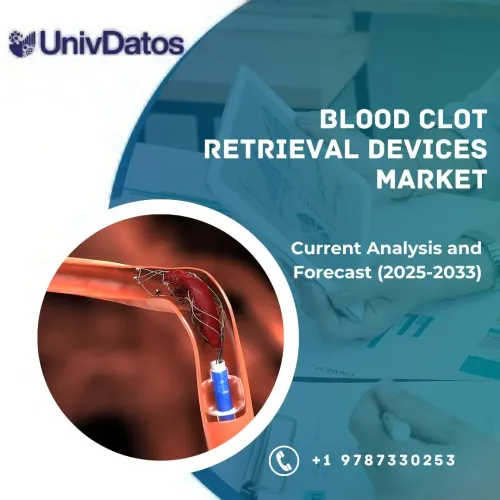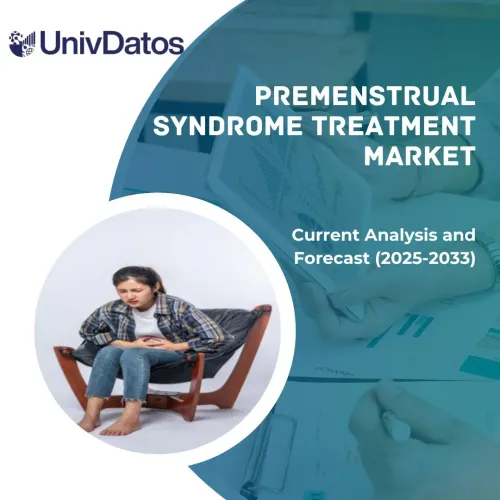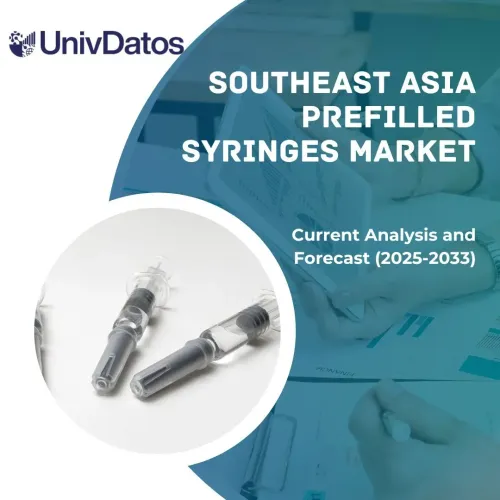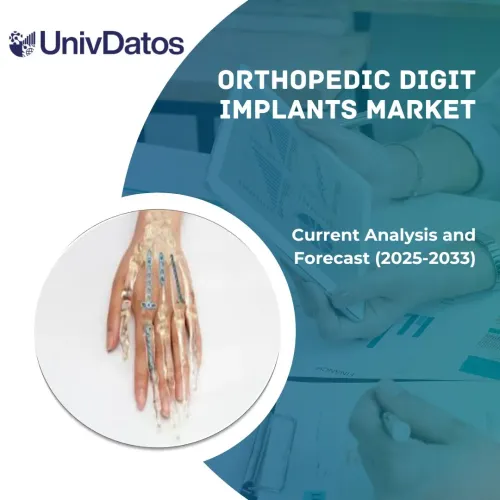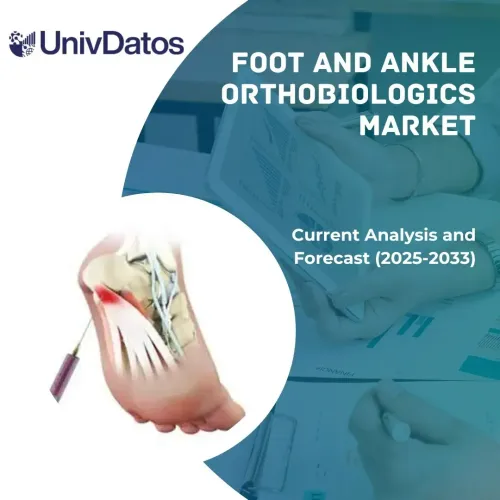- Home
- About Us
- Industry
- Services
- Reading
- Contact Us
Embolization Device Market: Current Analysis and Forecast (2023-2030)
Emphasis on Device (Embolization Coil, Liquid Embolic Agents, Embolization Particles, Flow Diverters, and Others.); Application (Peripheral Vascular Disease, Neurology, Oncology, and Others); End-User (Hospitals, Ambulatory Surgical Centers, and Others); Region/Country.
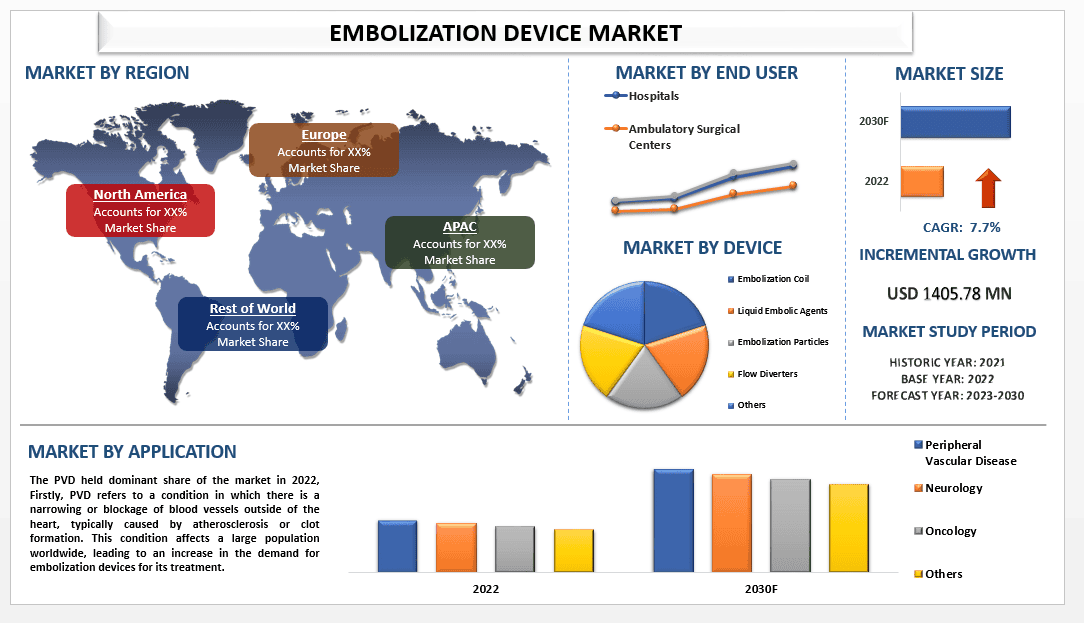
The embolization device market was valued at USD 1599.39 Million and is expected to grow at a strong CAGR of around 7.7% during the forecast period (2023-2030) owing to rising prevalence of targeted diseases. Embolization devices are used in a variety of diseases for therapeutic purposes. They are primarily used to block or reduce blood flow to specific areas of the body, thereby preventing the progression of disease, controlling bleeding, or facilitating the delivery of targeted treatments. According to the Brain Aneurysm Foundation, approximately 6 million people in the United States (or 1 in 50) have an unruptured brain aneurysm. It is estimated that about 30,000 ruptured brain aneurysms occur each year in the United States.
Some of the major players operating in the market Medtronic plc; Stryker Corporation; Terumo Corporation; Cook Medical, Inc.; Johnson & Johnson; Boston Scientific Corporation; Penumbra, Inc.; Abbott Laboratories; Merit Medical Systems, Inc.; and Shape Memory Medical. Several M&As along with partnerships have been undertaken by these players to facilitate customers with hi-tech and innovative products/technologies.
Insights Presented in the Report
“Amongst device, the liquid embolic agents segment to grow with high CAGR during the forecast period”
Based on the device, the market is segmented into embolization coil, liquid embolic agents, embolization particles, flow diverters, and others. The liquid embolic agents is anticipated to grow with high CAGR during the forthcoming period. A liquid embolic agent is a medical device designed to treat arteriovenous malformations (AVMs) and aneurysms by filling them with a liquid substance, which causes blood flow to stop. This technique is commonly used in neuro-interventional radiology to prevent the risk of bleeding or further complications associated with these conditions. The surge in the incidences of AVMs and aneurysms and the increasing adoption of liquid embolic agents is one of the key drivers boosting the demand for the segment. According to the National Health Department, in US, about 3%-5% of the population has cerebral aneurysms, which equates to approximately 10-15 million individuals.
“Amongst application, the peripheral vascular disease category to held dominant share of the market in 2022”
On the basis of application, the market is categorized into peripheral vascular disease (PVD), neurology, oncology, and others. The PVD held dominant share of the market in 2022, Firstly, PVD refers to a condition in which there is a narrowing or blockage of blood vessels outside of the heart, typically caused by atherosclerosis or clot formation. This condition affects a large population worldwide, leading to an increase in the demand for embolization devices for its treatment. Furthermore, advancements in healthcare infrastructure and an aging population have contributed to the rising prevalence of PVD, further driving the demand for embolization devices. The increasing adoption of minimally invasive procedures and a shift towards outpatient settings have also fueled the demand for these devices.
“Amongst end-user, the hospitals category to grow with significant CAGR during the forecast period”
On the basis of end-user, the market is segmented into hospitals, ambulatory surgical centers, and others. The driving factors for the hospitals are numerous and include the prevalence of the disease, the advancement of treatments and technology, the quality of care provided, the availability of specialized physicians and skilled nursing staff, and the financial incentives offered by health insurance companies. The hospitals offer treatment to a large number of patients, allowing them to capitalize on economies of scale and offer more efficient and cost-effective services. Financial incentives from health insurance companies are also a major factor, as these can reduce the cost of treatment and make it more affordable for patients.
Embolization Device Market Report Coverage
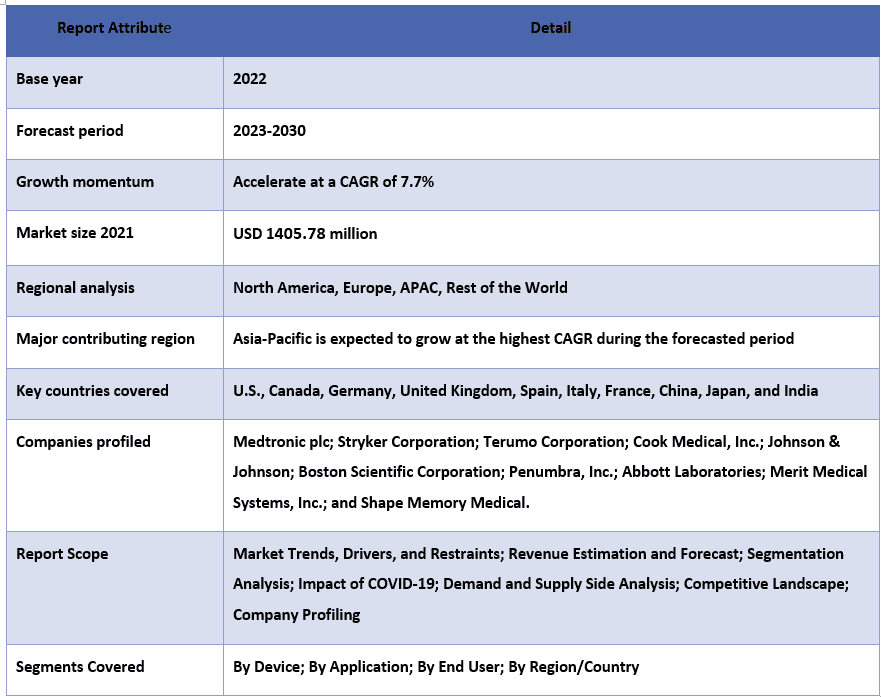
“APAC to grow with high CAGR during forthcoming ”
APAC is anticipated to grow with high CAGR during the forthcoming period. The market is driven by factors such as a large patient population, increasing prevalence of vascular diseases, and rising awareness of minimally invasive treatments. Rapid economic development in several countries within the region has led to improved access to healthcare services, including advanced medical procedures involving embolization devices. Moreover, established regulatory frameworks in countries like China, Japan, and India for medical devices, which have evolved to align with international standards are also driving the regional growth. The National Medical Products Administration (NMPA) oversees device regulation and product approvals in China. For instance, in February 2022, MicroPort NeuroTech Limited has been granted marketing approval by China’s National Medical Products Administration (NMPA) for its in-house-developed NUMEN Silk 3-D Electronically Detachable Coil Embolization System (NUMEN Silk). In addition, in August 2021, Wallaby Medical, received NMPA approval for Avenir Coil System for the management of intravascular embolization of intracranial aneurysms and other neurovascular malformations.
Q1: What is the current market size and growth potential of the global XX market?
Ans: The global embolization device market was valued at USD 1405.78 Million in 2022 and is expected to grow a CAGR of 7.7% during the forecast period (2023-2030).
Q2: What are the driving factors for the growth of the global embolization device Market?
Ans: Rise in the incidences of targeted disease, increasing research and development activities, and potential benefits of minimally invasive surgeries are the key factors driving the growth of the market.
Q3: Which segment has the largest share of the global embolization device market by Device Type?
Ans: Embolization coil segment held the dominant share of the global embolization device market by device type.
Q4: What are the emerging technologies and trends in the global embolization device market?
Ans: The growing automation is one of the major trends in the market.
Q5: Which region will dominate the global embolization device market?
Ans: North America is expected to dominate the market during the forecast period.
Q6: Who are the key players operating in the global embolization device market?
Ans: Medtronic plc; Stryker Corporation; Terumo Corporation; Cook Medical, Inc.; Johnson & Johnson; Boston Scientific Corporation; Penumbra, Inc.; Abbott Laboratories; Merit Medical Systems, Inc.; and Shape Memory Medical.
Reasons to buy this report:
- The study includes market sizing and forecasting analysis validated by authenticated key industry experts.
- The report presents a quick review of overall industry performance at one glance.
- The report covers an in-depth analysis of prominent industry peers with a primary focus on key business financials, product portfolios, expansion strategies, and recent developments.
- Detailed examination of drivers, restraints, key trends, and opportunities prevailing in the industry.
- The study comprehensively covers the market across different segments.
- Deep dive regional level analysis of the industry.
Customization Options:
The global embolization device market can further be customized as per the requirement or any other market segment. Besides this, UMI understands that you may have your own business needs, hence feel free to connect with us to get a report that completely suits your requirements.
Table of Content
Research Methodology for the Embolization Device Market Analysis (2023-2030)
Analyzing the historical market, estimating the current market, and forecasting the future market of the global embolization device market were the three major steps undertaken to create and analyze the adoption of embolization device in major regions globally. Exhaustive secondary research was conducted to collect the historical market numbers and estimate the current market size. Secondly, to validate these insights, numerous findings and assumptions were taken into consideration. Moreover, exhaustive primary interviews were also conducted, with industry experts across the value chain of the global embolization device market. Post assumption and validation of market numbers through primary interviews, we employed a top-down/bottom-up approach to forecasting the complete market size. Thereafter, market breakdown and data triangulation methods were adopted to estimate and analyze the market size of segments and sub-segments of the industry pertains to. Detailed methodology is explained below:
Analysis of Historical Market Size
Step 1: In-Depth Study of Secondary Sources:
Detail secondary study was conducted to obtain the historical market size of the embolization device market through company internal sources such as annual reports & financial statements, performance presentations, press releases, etc., and external sources including journals, news & articles, government publications, competitor publications, sector reports, third-party database, and other credible publications.
Step 2: Market Segmentation:
After obtaining the historical market size of the embolization device market, we conducted a detailed secondary analysis to gather historical market insights and share for different segments & sub-segments for major regions. Major segments are included in the report as device, application, and end-user. Further country-level analyses were conducted to evaluate the overall adoption of testing models in that region.
Step 3: Factor Analysis:
After acquiring the historical market size of different segments and sub-segments, we conducted a detailed factor analysis to estimate the current market size of the embolization device market. Further, we conducted factor analysis using dependent and independent variables such as device, application, and end-user of the embolization device market. A thorough analysis was conducted for demand and supply-side scenarios considering top partnerships, mergers and acquisitions, business expansion, and product launches in the embolization device market sector across the globe.
Current Market Size Estimate & Forecast
Current Market Sizing: Based on actionable insights from the above 3 steps, we arrived at the current market size, key players in the global embolization device market, and market shares of the segments. All the required percentage shares split, and market breakdowns were determined using the above-mentioned secondary approach and were verified through primary interviews.
Estimation & Forecasting: For market estimation and forecast, weights were assigned to different factors including drivers & trends, restraints, and opportunities available for the stakeholders. After analyzing these factors, relevant forecasting techniques i.e., the top-down/bottom-up approach were applied to arrive at the market forecast for 2030 for different segments and sub-segments across the major markets globally. The research methodology adopted to estimate the market size encompasses:
- The industry’s market size, in terms of revenue (USD) and the adoption rate of the embolization device market across the major markets domestically
- All percentage shares, splits, and breakdowns of market segments and sub-segments
- Key players in the global embolization device market in terms of products offered. Also, the growth strategies adopted by these players to compete in the fast-growing market
Market Size and Share Validation
Primary Research: In-depth interviews were conducted with the Key Opinion Leaders (KOLs) including Top Level Executives (CXO/VPs, Sales Head, Marketing Head, Operational Head, Regional Head, Country Head, etc.) across major regions. Primary research findings were then summarized, and statistical analysis was performed to prove the stated hypothesis. Inputs from primary research were consolidated with secondary findings, hence turning information into actionable insights.
Split of Primary Participants in Different Regions
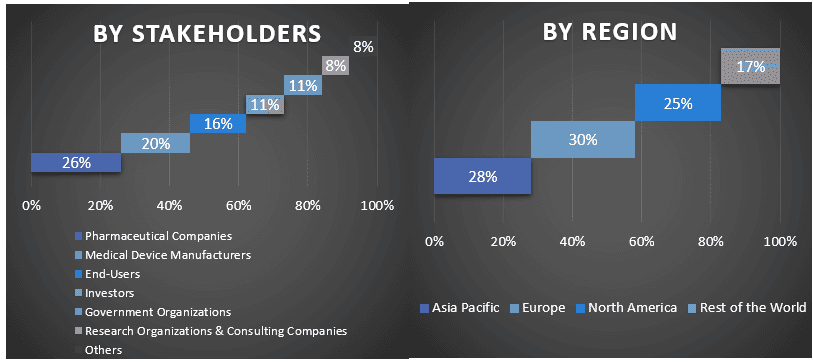
Market Engineering
The data triangulation technique was employed to complete the overall market estimation and to arrive at precise statistical numbers for each segment and sub-segment of the global embolization device market. data was split into several segments & sub-segments post studying various parameters and trends in the areas of the device, application, and end-user in the global embolization device market.
The main objective of the Global Embolization Device Market Study
The current & future market trends of the global embolization device market were pinpointed in the study. Investors can gain strategic insights to base their discretion for investments on the qualitative and quantitative analysis performed in the study. Current and future market trends determined the overall attractiveness of the market at a regional level, providing a platform for the industrial participant to exploit the untapped market to benefit from a first-mover advantage. Other quantitative goals of the studies include:
- Analyze the current and forecast market size of the embolization device market in terms of value (USD). Also, analyze the current and forecast market size of different segments and sub-segments
- Segments in the study include areas of the device, application, and end-user
- Define and analysis of the regulatory framework for the embolization device industry
- Analyze the value chain involved with the presence of various intermediaries, along with analyzing customer and competitor behaviors of the industry
- Analyze the current and forecast market size of the embolization device market for the major region
- Major countries of regions studied in the report include Asia Pacific, Europe, North America, and the Rest of the World
- Company profiles of the embolization device market and the growth strategies adopted by the market players to sustain in the fast-growing market
- Deep dive regional level analysis of the industry
Related Reports
Customers who bought this item also bought



